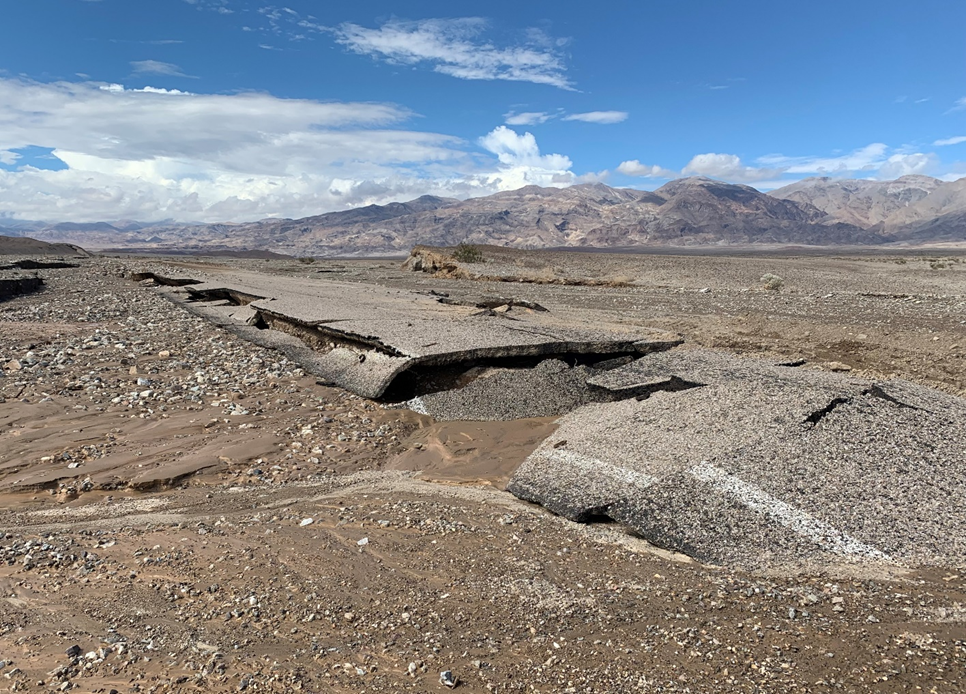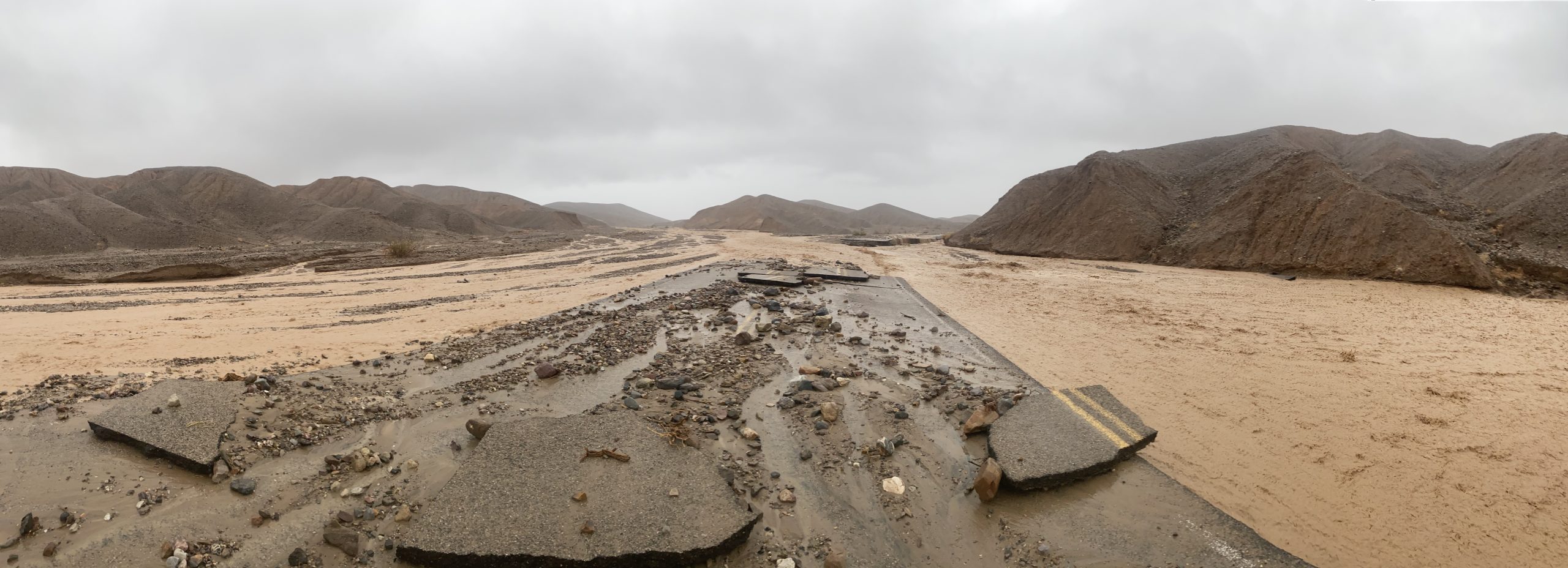
Death Valley National Park was forced to close last week because of historic flooding brought about by “unprecedented” amounts of rainfall, according to the National Park Service. Flash flooding was prevalent and all roads in and out of the park including the visitor center were abruptly closed.
Approximately 1,000 people were stranded in the park, according to park officials. No injuries have been reported.
DEATH VALLEY FLOODING: Highway 190 is closed in Death Valley due to flooding Friday morning. FOX5 viewer Landt Robert shared video of flooding in the area that he captured at about 7 a.m. Friday. pic.twitter.com/2XGaaL1blE
— FOX5 Las Vegas (@FOX5Vegas) August 5, 2022
The National Park Service shared a press release regarding the sudden closure of Death Valley:
On August 5, 2022, unprecedented amounts of rainfall caused substantial flooding within Death Valley National Park. All roads into and out of the park are currently closed and will remain closed until park staff can assess the extensiveness of the situation.
The California Department of Transportation anticipates it will take four to six hours to open a road on Highway 190 toward the east of the park to allow an exit.
There are approximately 500 visitors and 500 staff currently unable to exit the park. No injuries to staff or visitors have been reported.
Approximately sixty cars, belonging to visitors and staff, are buried in several feet of debris at the Inn at Death Valley.
The flood waters pushed dumpster containers into parked cars, which caused cars to collide into one another. Additionally, many facilities are flooded including hotel rooms and business offices.
The Cow Creek Water system, which provides water to the Cow Creek area for park residents and offices, has failed. Park staff have identified a major break in the line due to the flooding which is being repaired. The remainder of the line is being inspected.
The park received 1.46 inches of rain at Furnace Creek, which nearly matches the previous daily record of 1.47 inches.
The park is not expecting further monsoonal rain activity today. However, more rain is expected later in the week and the ground is very saturated.
The park is working closely with its partners at the California Department of Transportation, and state and county emergency services on assessing the situation and damage.

The NPS shared an update on Sunday, detailing the extent of the flooding and describing how nearly a year’s worth of rain fell in only three hours. According to the NPS, the flooding is the result of a “1,000-year rain event” which caused widespread damage and closure of all park roads.
Rain this weekend was a historic event, with nearly a year’s worth of rain falling in three hours. The 1.46 inches of rain recorded at Furnace Creek is still preliminary data, and mere drops away from the all-time record of 1.47 inches. The rain caused widespread damage and closure of all park roads.
“The heavy rain that caused the devastating flooding at Death Valley was an extremely rare, 1000-year event, says Daniel Berc, meteorologist with the National Weather Service Las Vegas. “A 1000-year event doesn’t mean it happens once per 1000 years, rather that there is a 0.1% chance of occurring in any given year.”
Major impacts include the loss of a critical portion of the Cow Creek water system that serves some park residences as well as park facilities including the Emergency Operations Building and maintenance yard. Over 600 feet of the water main was blown out by flash floods, causing catastrophic damage to this system.
Additionally, many miles of roadway are known to have moderate to severe asphalt damage with hundreds of miles of roadways impacted by debris. Road conditions are still being assessed, as damage makes access to some areas impossible by vehicle. Yesterday’s aerial surveys by a Naval Weapons Station China Lake helicopter crew were able to do a thorough search and located several vehicles in remote areas of the park. Rangers were able to contact these visitors and ensure that everyone was ok.
California Department of Transportation expects to reopen portions of Highway 190 by Tuesday, allowing for travel between Pahrump, NV and the park’s residential and administrative area at Cow Creek. This will include access to the park’s visitor center at Furnace Creek, as well as the private hotels at Furnace Creek. Park roads are expected to remain closed for days to months depending on the severity of damage.
To date, there are no reported injuries from visitors or park residents, and people who were previously sheltering in place have been able to carefully travel out through the damaged roadways. No park roads are currently open to recreational travel due to ongoing safety concerns and active road work.
“Death Valley is an incredible place of extremes,” said park superintendent Mike Reynolds. “It is the hottest place in the world, and the driest place in North America. This week’s 1,000 year flood is another example of this extreme environment. With climate change models predicting more frequent and more intense storms, this is a place where you can see climate change in action!”